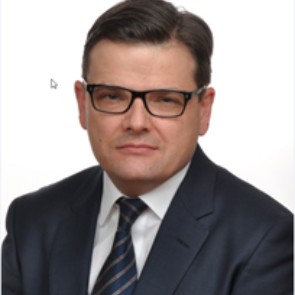Navigating Sovereign Issuance in the CEE: Adapting to a Fragmented Macro-Financial Landscape
By Marjan Divjak, Director-General, Treasury, MoF Slovenia
The Central and Eastern European (CEE) region is facing a complex and challenging geopolitical, financial, and institutional landscape, which is currently particularly pronounced. The CEE sovereign issuers are operating in an environment of a higher for longer interest rates, shifting investor appetite and expectations, increased fiscal demands and fragmented macro landscape. Sovereign issuance across the region has remained resilient, but the context has changed. The main challenge remains elevated uncertainty which is from debt managers perspective most difficult to manage. The objective is to maintaining market access managing refinancing risk while controlling funding costs. Inflation has moderated from its post-pandemic highs, but remains elevated in several CEE economies, with the implications for more volatile markets.
In this environment, the objective of Slovenia funding operations was to pursue strategic objectives of the debt management: timely funding execution, cost-risk efficient funding, secondary market liquidity of the Euro yield curve and investor base diversification. In order to meet the strategic objectives Slovenia has made an effort to demonstrate versatility and innovation in its issuance implementation with the successful 30-year euro-denominated bond issue, which attracted strong long-term investor interest. The country issued a fully digital bond on the blockchain infrastructure, marking a Eurozone first sovereign DLT bond. It has actively engaged with retail investors through domestic offerings. The sustainability-linked issuance of Slovenia is the first of this kind in the European Union which increasingly affirms ESG strategy in Slovenia’s funding strategy, aligning with broader global and EU sustainability objectives while diversifying the investor base.
CEE countries will continue to face significant challenges coming from the geographical proximity to the war in Ukraine. At the same time, increased funding needs driven by increased defense expenditures are putting upward pressure on borrowing requirements. In several CEE markets, thin secondary market liquidity complicates funding operations by limiting price discovery. Together, these factors underscore the importance of maintaining investor confidence, enhancing transparency, and strengthening local capital markets to ensure stable and efficient sovereign financing.

Marjan Divjak is the Director General of the Treasury Directorate at Slovenia's Ministry of Finance. The Treasury Directorate, led by Marjan Divjak, was awarded Sovereign Risk Manager of the year 2017 by the Risk Magazine. His responsibilities are funding, liability management, state budget liquidity management and Single Treasury Account operations. He previously worked in the middle office of the Treasury Directorate. He has also been an adviser in the Office of the Prime Minister. He is a member of the supervisory board of the SID Bank. Marjan Divjak is an external expert in the Monetary and Capital Markets (MCM) Department of the International Monetary Fund (IMF). He holds a BEng in civil engineering from the Faculty of Engineering, Leeds University (UK), an MSc in business administration from the Faculty of Economics, Ljubljana University (SLO), an MA in management of development from the Faculty of Political Sciences, Turin University (ITA), and an MSc in mathematical finance from the Mathematical Institute, Oxford University (UK).
.png)
